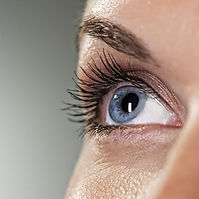
Sense of Touch: Arches, Loops and Whorls - All About Fingerprints

This lesson contains affiliate links to products I have used and personally recommend. At no cost to you, I make a commission for purchases made through the links or advertisements. These commissions help to pay for the costs of the site and enable it to remain free for anyone who wants to use it.
Objectives:
-
Students will be able to identify the three types of fingerprints.
-
Students will be able to explain how fingerprints smudges are created.
-
Students will be able to explain how fingerprints are unique to an individual.
-
Students will be able to explain how fingerprints cannot be altered unless there are extreme circumstances.
-
Students will be able to identify the three types of fingerprint impressions: patent, plastic, and latent.
Questions that encompasses the objective:
-
Have you ever put your fingers onto a clean glass table or mirror?
-
What did you notice after you took your fingers off?
-
Was the glass or mirror still clean?
Prepare the Learner: Activating Prior Knowledge.
How will students prior knowledge be activated?
Warm up by asking students:
-
What do you know about your fingerprints?
Common Core State Standards:
-
CCSS.ELA-LITERACY.SL.2.1
-
CCSS.ELA-LITERACY.SL.2.1 B
-
CCSS.ELA-LITERACY.SL.2.4
-
CCSS.ELA-LITERACY.W.2.2
-
CCSS.ELA-LITERACY.W.3.2
-
CCSS.ELA-LITERACY.W.3.2 B
-
CCSS.ELA-LITERACY.SL.3.1
-
CCSS.ELA-LITERACY.SL.3.4
Materials and Free Resources to Download for this Lesson:
-
“Our Classroom Fingerprints” activity materials:
-
Inkpad
-
Magnifying glass
-
Chart paper
-
Crayons/Markers/Colored Pencils
Input:
What is the most important content in this lesson?
To reach this lesson’s objective, students need to understand:
-
The three types of fingerprints: arches, loops, and whorls.
-
The pores on our fingertips ooze oil and salt and create fingerprints.
-
Each person has a unique fingerprint and not two people have the same fingerprints.
-
Fingerprints cannot be altered unless there are extreme circumstances.
-
Fingerprints are characterized into three different impressions: patent, plastic, and latent.
How will the learning of this content be facilitated?
-
Begin the lesson by explaining to the students that today they are going to be learning about fingerprints. [Instruct the students to take about a minutes and look at their fingerprints]. Next, show them the YouTube video Fingerprint: Video Learning: by wizscience.com. The video is about 2 minutes long. Once it is over, begin a discussion about the video and what the students observed.
-
Explain that fingerprints are our unique identity. No two people have the same fingerprints; not even identical twins. Fingerprints are not only our “identifiers”, they also help us grasp onto things. The loops and spirals on our fingers are ridges and they help us hold onto objects. They also leave smudges when we touch glass, a mirror, or something that has just been painted. Smudges are created by the oils and salt that are excreted (released) from the pores on our fingertips. Everytime we touch an object, we leave our fingerprints. It is easy to see the smudges/ our fingerprints on clear surfaces, such as glass or mirrors. It is not easy to see the smudges/ our fingerprints on objects such as clothing or pillow because these objects absorb/ take in the oils. We do, however, leave fingerprints on these items.
-
Explain that there are different types of fingerprint impressions: patent, plastic, and latent. Patent prints are the prints we see on smooth surfaces. Plastic prints are the prints that are the result of an impression, for example if we touch silly putty or wet paint. Latent prints are the prints that are made of oil and sweat and that we cannot see. These prints are retrieved by using special chemicals and enhanced for observation.
-
Hand out the “Classifying Fingerprints” worksheet. If it is possible, project the “Classifying Fingerprints” worksheet onto the board using a projector or put into a PowerPoint document and project so that the students can label each picture as the teacher explains.
-
Explain that fingerprints are classified into three groups: arches, loops, and whorls.
-
Loops: ridges go from one side to the other; two loop patterns are: ulnar loop and radial loop; loop fingerprints make up 70% of all fingerprints.
-
Whorls: series of circles; whorl fingerprints make up 25% of all fingerprints.
-
Arches: ridges flow from one side and out the other side; arch fingerprints make up 5% of all fingerprints.
-
Tented Arch: grouped in the arch category; very rare fingerprint often found on the pinky finger.
-
-
Explain that fingerprints cannot be altered/ changed. The fingerprints we are born with are the fingerprints we will have our entire life. If we burn or injure our fingers, our fingerprint will remain intact. There are some cases, however, where fingerprints can be altered. If we have surgery on our fingers or if we severely injure them, it can change our fingerprints—but these are extreme cases.
-
Explain briefly how fingerprints play a role in catching criminals. Sometimes criminals leave their fingerprints behind when committing a crime. When the police arrive to search the crime scene, they will use special chemicals to search for fingerprints—especially latent fingerprints. They collect these fingerprints and use them to identify the criminal.
Information Sources:
-
After the “Classifying Fingerprints” worksheet is explained, the students will participate in the activity “Our Classroom Fingerprints”. Instruct the students to break into groups of 3. Give each group an ink pad and magnifying glass. Give each student a “My Fingerprints” activity worksheet. The students will use the ink pad and stamp their fingerprints into the boxes on the activity worksheet. Once the students have completed the activity worksheet, instruct them to look at their fingerprints with the magnifying glass. Instruct the students identify which type of fingerprint they have. Once all of the groups have completed the stamping and observing, have the students reconvene at their desks. On chart paper, draw three columns and label: arches, loops, and whorls. Go around the room and ask each student what category (s) their fingerprints fall into. Write the student’s name in the correct column (s). Once completed, count up the names in each column and see which fingerprint is the common amongst the students in the class.
-
The final assessment will be for the students to answer the question:
-
Think about what you learned in class today about fingerprints.
-
Why are fingerprints important?
-
How does your finger create a print you can see?
-
Do we leave fingerprints on everything we touch?
-
Imagine a world if we didn’t have fingerprints. What would be some positive differences and what would be some negative ones?
-
Time/Application
3-5 minutes
Guided Introduction
Review the class/ agenda with the students:
-
Introductory video
-
Discussion of fingerprints, how fingerprint smudges are created, the different types of fingerprints, fingerprint categories, and fingerprint alterations.
-
Activity: “Our Classroom Fingerprints”
-
Discussion of Activity
-
Independent Assessment
10 minutes
Introductory Activity:
-
Show the students the video: Fingerprint: Video Learning: by WizScience.com
-
Discuss the video with the students.
-
Continue the discussion by explaining fingerprints are our unique identity.
15 Minutes
Fingerprints Discussion/Classifying Fingerprints Worksheet
-
Discuss the way fingerprint smudges are made.
-
Discuss the three different types of fingerprint impressions.
-
Give each student a “Classifying Fingerprints” worksheet.
-
Tell the students that as each part is explained, they should label it onto their worksheet.
-
Discuss the importance of fingerprints in forensics/ crime scenes.
15 Minutes
Activity: “Our Classroom Fingerprints”
-
Instruct the students to break into groups of three.
-
Give each group an inkpad and magnifying glass.
-
Give each student a “My Fingerprints” observation sheet.
-
Instruct the students to stamp each of the fingers onto the sheet and then use the magnifying glass to observe what type of fingerprint they have.
-
At the end of 15 minutes, have the students return to their desks.
-
Draw three columns on chart paper and label: arches, loops, and whorls. Go around the room and ask each student what category their fingerprints fall into. Write the student’s name in the correct column. Once completed, count up the names in each column and see which fingerprint is the common amongst the students in the class.
Closure/Assessment
10 minutes
Activity: “What Does it Feel Like?”
-
As an independent assessment, the students will answer the question:
-
Think about what you learned in class today about fingerprints. Why are fingerprints important? How does your finger create a print you can see? Do we leave fingerprints on everything we touch? Imagine a world if we didn’t have fingerprints. What would be some positive differences and what would be some negative ones??
-
Appropriate answers should include (but will vary):
-
Our fingerprints are important because they are our unique identity. Our fingerprints help to identify us. If we touch glass or a mirror, we leave a fingerprint smudge mark. This mark is created by the oils and salt that are excreted from our fingertips. Everytime we touch something, we leave our fingerprints behind. We can only, however, see fingerprints on surfaces like mirrors and glass. Looking for fingerprints on items like clothing and pillows will be harder because the oils and salts are absorbed. If we didn’t have fingerprints it would be harder to catch criminals. We wouldn’t be able to grasp onto objects, since our fingerprints help us to do so. We also wouldn’t have our own unique identity.
-
-
If there is additional time, discuss questions from the fingerprinting activity.
Individualized Instruction/Scaffolding
English Language Learners will be supported in this lesson through data-based heterogeneous grouping, verbal and written repetition of new vocabulary words, and multiple representation of vocabulary words through printed images and video.













